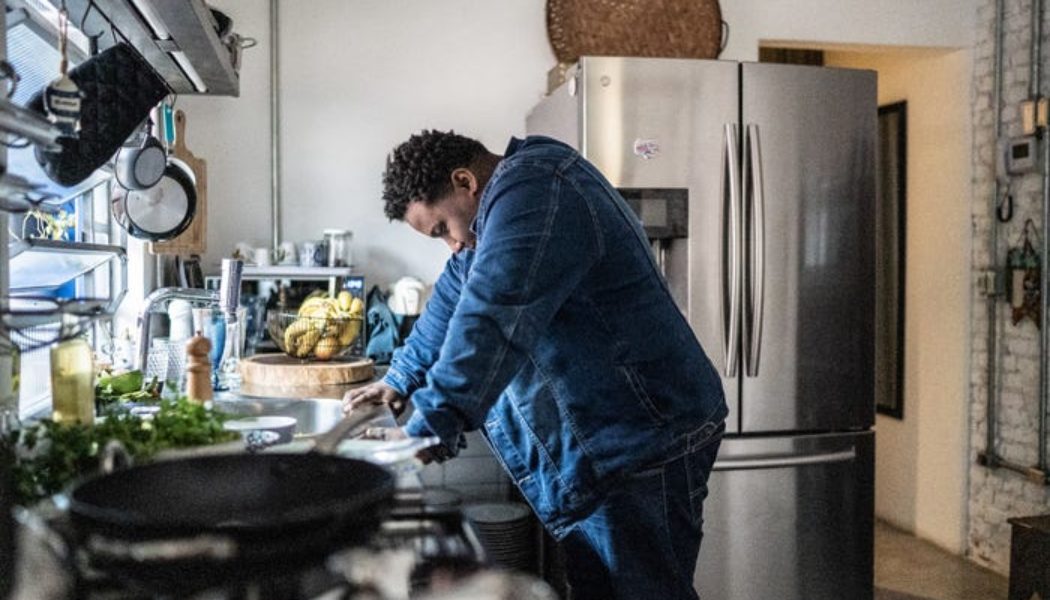
FG Trade/Getty Images
- Elder millennials are facing debt and slowing wage growth layered atop past recessions.
- And new homeownership by younger millennials is outpacing elder millennials.
- Yet, elder millennials are still spending, even if they can’t afford the lifestyles they want.
It’s a bad time to be an elder millennial.
Elder millennials — whom Bank of America defines as those ages 35 to 45 — have already weathered a lot of economic storms. In their adult lives, they’ve seen two recessions, a pandemic, and an economy that seemed to be stacked against them from the start.
But while the pandemic and its resulting labor market may have offered some economic reprieve, the financial walls might be closing in on elder millennials. That could be chalked up to the lifestyle expectations of a cohort that should be entering a more stable period of adulthood, one that includes comfortably spending, owning a house, and saving for retirement. Instead, they’re falling behind in homeownership, accruing trillions in debt, and still scrambling to maintain their lifestyle.
Some of the blame rests with the recessions that came before.
“The older Millennial cohort is more likely to have been hit harder by the 2008 housing crisis, which potentially set them back financially relative to younger Millennials,” Bank of America Institute wrote in its research on homeownership. As Business Insider’s Hillary Hoffower previously reported, the Great Recession made millennials born in the 1980s a “lost generation” when it came to wealth accumulation. A 2018 report from the Federal Reserve Bank of St. Louis found that the wealth of millennials born in the 1980s was 34% below predictions.
“We believe many families in the youngest cohort we studied here — respondents born in the 1980s — are at substantial risk of accumulating less wealth over their life spans than the members of previous generations,” the report’s authors wrote.
But just as the pandemic led to a boom-bust cycle for younger workers, it seems as if older millennials, too, are facing a bleak picture — especially as childcare costs mount, with older millennials probably facing the brunt of more costly care.
It’s no wonder then that older millennials were the least likely to report feeling “financially well” in Bank of America’s 2023 Workplace Benefits survey of about 1,300 employees. Indeed, 80% of older millennials said they felt stressed about their financial situations. Broadly, millennials’ financial well-being scores have tumbled over the past year, data from Morning Consult shows. The Survey of Consumer Finances indicates those ages 35 to 44 are carrying a median debt of about $140,400 — the highest median debt of any age cohort.
While members of the elder-millennial cohort appear to have high median debt, they only make a median salary of $65,676 a year, according to the latest earnings data from the Current Population Survey.
Workers ages 40 to 49 hold about $4.4 trillion in debt, according to the Federal Reserve Bank of New York — the most of any age cohort they tracked. And that’s also true for the youngest elder millennials, with workers ages 30 to 39 holding $3.9 trillion, slightly outpacing those ages 50 to 59.
That’s not stopping elder millennials from spending money (or racking up credit-card debt). A Federal Reserve Bank of New York report found that Americans ages 35 to 44 were still spending on retail and restaurants, more so than their younger compatriots ages 25 to 34. And while younger Americans are seeing more credit-card debt go unpaid for 90 days, elder millennials are letting their debts languish too.
At the same time, though, Americans under 40 are seeing their real wealth grow at a much faster rate. And, while wage growth has been strong across all ages, it’s been far more pronounced for workers under 24.
Meanwhile, the number of new foreclosures for those ages 40 to 49 has been ticking up, hitting about 8,800 in the third quarter of 2023.
Similarly, 40 to 49-year-olds also lead the pack when it comes to new bankruptcies, with about 28,500 people in that age cohort declaring bankruptcy in the third quarter of 2023. Among 30 to 39-year-olds, about 24,000 were also newly entering bankruptcy.
And then there’s homeownership or lack thereof. Through tracking internal data on escrow payments, Bank of America Institute found that older millennials were falling behind their younger millennial counterparts. They found that the number of older-millennial households who had an escrow payment had fallen 2% year-over-year as of October 2023, which was lower than Gen X; on the flip slide, younger millennials’ payments “remained relatively strong.”
And so, for elder millennials, it’s yet again a bleak picture. The things that were supposed to mark their entry into adulthood — homeownership, becoming a parent, and having enough disposable income to spend on things such as going out — are instead only making their economic situation that much more difficult.
Are you an elder millennial dealing with a tough economic situation? Contact this reporter at jkaplan@insider.com.









